Dashboard and Button Symbols in a Car: What Do They Mean?
 MichaelOct 30, 2025, 11:55 AM
MichaelOct 30, 2025, 11:55 AM

【PCauto】The design of automotive dashboard and control symbols adheres to the standards established by the International Organization for Standardization (ISO). These standards aim to communicate vehicle data through simplified pictograms and guarantee universal comprehension.
However, as driving licenses and car ownership become increasingly common, a growing number of people still struggle to understand the symbols in their vehicles. Furthermore, advancements in automotive technology—particularly the trends toward smart driving and electrification—have led to a greater variety and complexity of symbols. This has resulted in the emergence of many confusing icons that are difficult for drivers to interpret.
Let me now explain what the car dashboard and button symbols represent and their meanings.
Why are the symbols on the car dashboard in different colors?
This is a critically important aspect, as color enables drivers to quickly discern vehicle status:
- Red: Indicates a serious fault requiring immediate attention or inspection.
- Yellow: Signals a potential risk or fault that requires prompt inspection.
- Blue: Provides information about an active vehicle state (e.g., high beam headlights are on).
- Green: Confirms that a specific function is operating normally.
In simple terms, red means urgent, yellow means there is a problem but it is not urgent, blue represents the vehicle's status, and green indicates normal operation.
What indicators are typically found on the car dashboard?
What are the common red indicator symbols?
| Symbol | Name | Meaning and Actions |
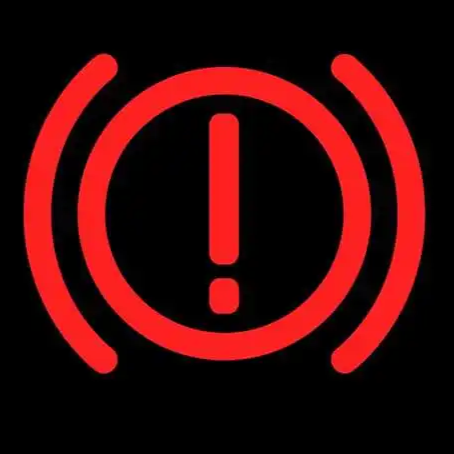 | Brake System Warning Light | Indication: The parking brake may not be fully released, the brake fluid level is below the standard, or there is a malfunction in the braking system components. Required Actions: 1.CONFIRM PARKING BRAKE RELEASE: Ensure the parking brake is completely disengaged. 2.STOP IF LIGHT PERSISTS: If the warning light remains illuminated after releasing the parking brake, stop the vehicle immediately. 3.SEEK PROFESSIONAL INSPECTION: Contact a qualified technician to inspect the brake fluid level and braking system components. 4.DO NOT DRIVE: Continuing to drive is prohibited until the issue is resolved. |
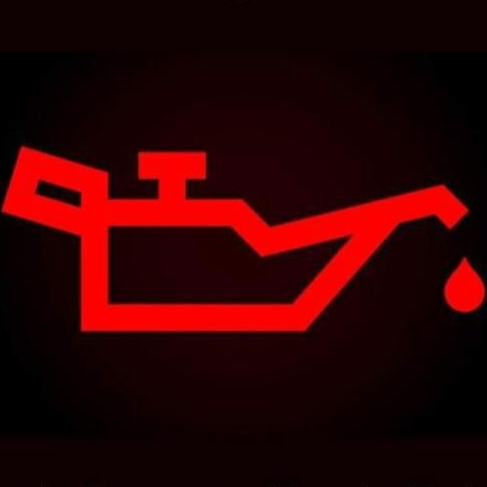 | Oil Warning Light | Indication: Critically low engine oil level or pressure, which risks engine damage due to insufficient lubrication. Immediate Actions Required: 1.STOP safely and TURN OFF the engine immediately. 2.CHECK the engine oil level using the dipstick. 3.IF LOW: Add the appropriate oil to bring it to the correct level. 4.IF LEVEL IS NORMAL (but light remains on): This signals a serious problem (e.g., faulty oil pump). 5.DO NOT RESTART THE ENGINE. Contact a repair service for assistance. |
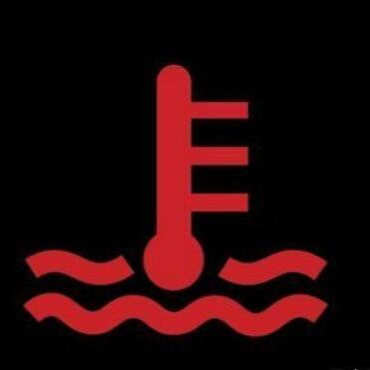 | Engine Temperature Warning Light | Indication: Engine coolant temperature is critically high (usually >95°C), risking major engine damage. Immediate Actions Required: 1.SAFELY PULL OVER and SHUT OFF the engine immediately. 2.OPEN the hood to assist with ventilation and cooling. 3.WAIT until the engine cools down to a safe temperature. 4.CHECK the coolant level in the reservoir. 5.IF LOW: Carefully add coolant to the standard range. 6.IF LEVEL IS NORMAL (but problem persists): A system fault is likely (e.g., water pump, thermostat). Seek professional inspection and repair. Do not continue driving. |
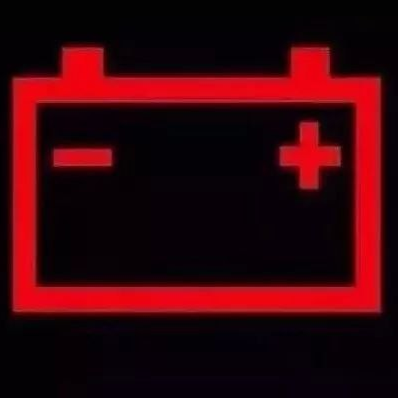 | Charging System Warning Light | Indication: The alternator has failed and is not charging the battery. The vehicle is operating on limited battery reserves. Required Actions: 1.CONSERVE POWER: Immediately turn off all non-essential electrical devices (e.g., air conditioning, infotainment system). 2.SEEK REPAIR: Proceed to the nearest service facility without delay to have the alternator and charging lines checked. 3.AVOID STALLING: Taking these steps is crucial to prevent the battery from draining completely, which would result in the vehicle shutting down. |
 | Airbag Warning Light | Indication: A malfunction has been detected in the airbag system. The airbags may fail to deploy during a collision. Required Actions: 1.SEEK PROFESSIONAL SERVICE: You must take the vehicle to a certified repair shop immediately. 2.DIAGNOSE: The issue requires professional diagnostic tools to read the specific fault code. 3.INSPECT & REPAIR: Technicians will inspect components (e.g., sensors, control unit) and perform necessary repairs. 4.ENSURE SAFETY: Do not delay this repair. The system must be restored to guarantee your safety. |
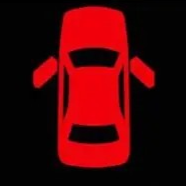 | Door Ajar Warning Light | Indication: One or more openings (doors, trunk, or hood) are not completely closed. Required Action: 1.SAFELY PULL OVER and stop the vehicle. 2.VISUALLY INSPECT and ensure all doors, the trunk/hatch, and the hood are securely latched. 3.CONFIRM the warning light has turned off before continuing your journey. |
What Are the Common Yellow Indicator Symbols?
| Symbol | Name | Meaning & Action |
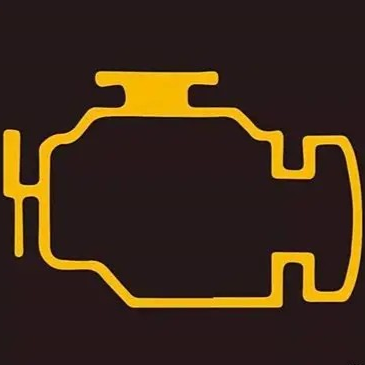 | Engine Warning Light | Indication: The engine control system has detected a malfunction, potentially related to fuel, ignition, or emissions. Required Actions: 1.LIMITED & CAUTIOUS DRIVING: If you must drive, do so at a moderate speed and avoid heavy loads, sudden acceleration, or hard braking. 2.SEEK PROFESSIONAL DIAGNOSIS: Visit a repair shop promptly. A technician will connect a diagnostic scanner to read the specific fault codes. 3.SYSTEM INSPECTION: This will guide the inspection of key components like the oxygen sensor, spark plugs, and throttle body to identify the root cause. |
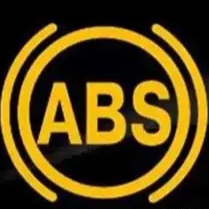 | ABS Warning Light | Indication: The Anti-lock Braking System (ABS) has failed. Conventional braking remains functional, but wheels may lock up during hard braking, increasing the vehicle's stopping distance. Required Actions: 1.AVOID HARD BRAKING: Refrain from sudden or aggressive braking maneuvers. 2.SEEK REPAIR: Have the vehicle inspected by a professional as soon as possible. 3.SYSTEM INSPECTION: Specific components requiring diagnosis and potential repair include the ABS pump and wheel speed sensors to restore full ABS functionality. |
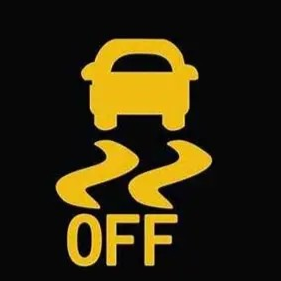 | ESP/ESC Warning Light | Indication: The Electronic Stability Program (ESP/ESC) is either switched off or has detected a system malfunction. Required Actions: 1.ATTEMPT TO ACTIVATE: If you manually switched the system off, press the ESP/ESC button to turn it back on. 2.SEEK DIAGNOSIS IF FAULTY: If the warning light indicates a fault, the vehicle must be inspected by a professional to diagnose the system's sensors and control unit. 3.EXERCISE CAUTION: While the system is inactive or faulty, avoid driving on slippery roads to prevent the risk of the vehicle skidding or losing control. |
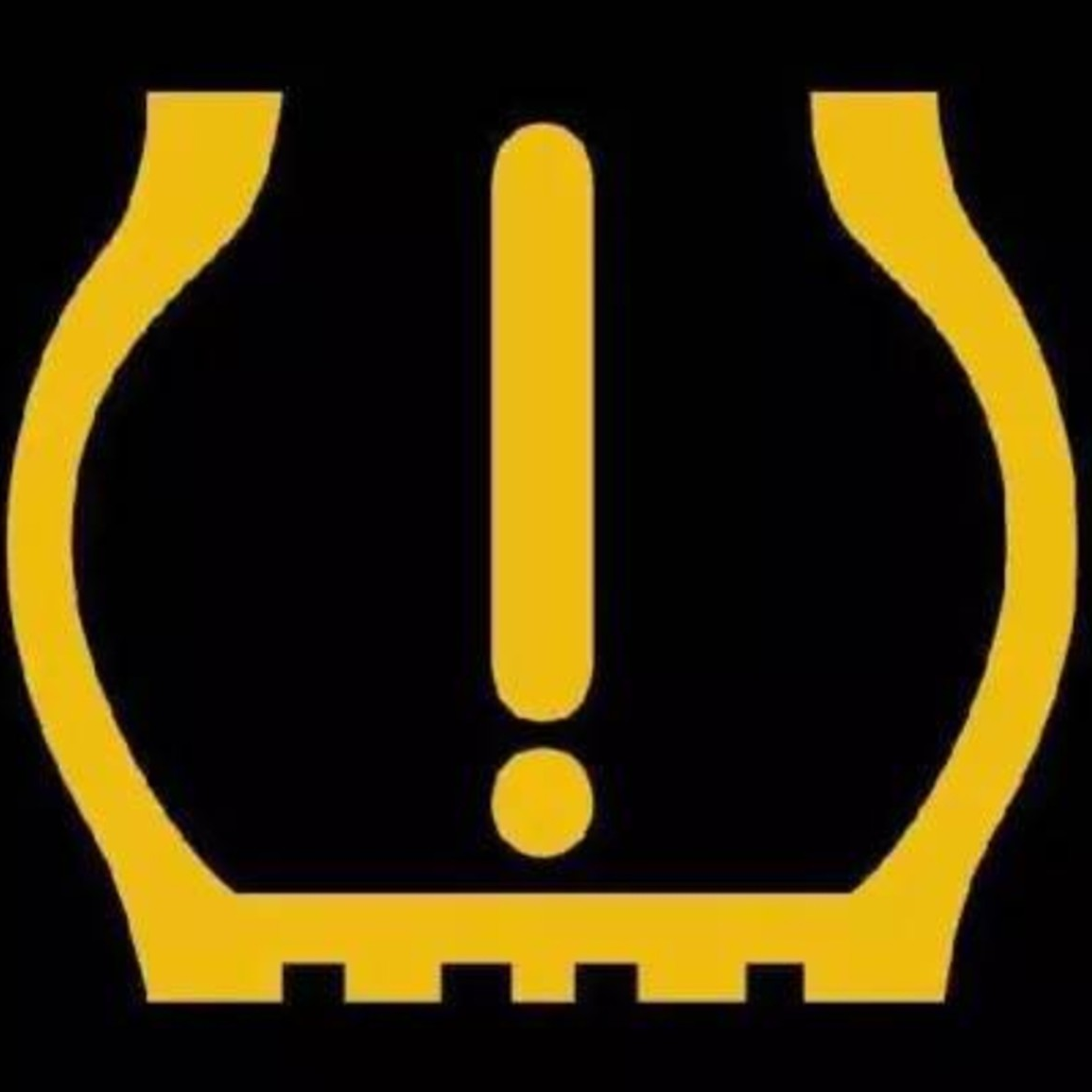 | Tire Pressure Monitoring Warning Light | Indication: The tire pressure for at least one tire is outside the standard range (either too high or too low). Required Actions: 1.CHECK PRESSURE: After stopping the vehicle, use a tire pressure gauge to measure the pressure in all tires. 2.ADJUST PRESSURE: Inflate or deflate the tires as necessary to match the standard values specified in the vehicle's manual. 3.INSPECT SENSOR: If the warning light remains on after the tire pressures are correct, inspect the tire pressure monitoring system sensors for a potential fault. |
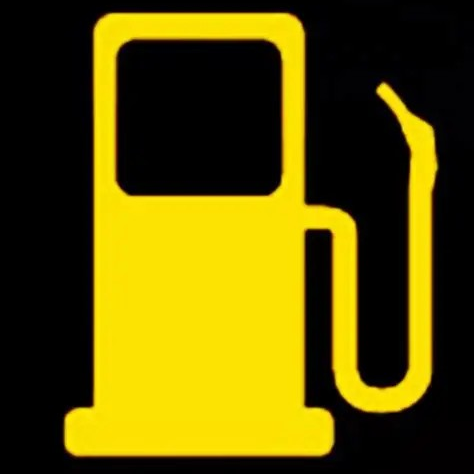 | Low Fuel Warning Light | Indication: The low fuel level warning light signifies that the fuel in the tank has dropped below a safe reserve level and requires immediate refueling. Required Actions: 1.REFUEL IMMEDIATELY: Plan to refuel the vehicle as soon as possible to avoid running out of fuel. 2.UNDERSTAND TRIGGERS: Be aware that this warning typically activates when the fuel gauge needle enters the red zone or when the vehicle's calculated range becomes critically low based on current driving conditions. |
 | Windshield Washer Fluid Warning Light | Indication: The windshield washer fluid level is below the minimum mark, preventing normal cleaning of the windshield. Required Actions: 1.ADD FLUID: Refill the reservoir with a windshield washer fluid that meets the required standards. 2.USE ANTIFREEZE FLUID IN WINTER: During winter, select a fluid specifically designed to resist freezing to prevent damage to the reservoir and the washer pump. |
 | Brake Pad Wear Warning Light | Indication: The brake pads have worn down to their limit (typically with a thickness of less than 3mm), resulting in reduced braking performance. Required Actions: 1.REPLACE PADS: Have the brake pads replaced at a repair shop within the next 7 days. 2.INSPECT DISCS: During replacement, the brake discs must be inspected for wear. 3.REPLACE DISCS IF NECESSARY: If the brake discs are found to be worn beyond the specified limit, they should be replaced at the same time. |
 | Power Steering System Warning Light | Indication: The power steering system warning light indicates a system malfunction. This may result in reduced or complete loss of power steering assistance, significantly increasing steering effort. Required Actions: 1.EXERCISE CAUTION: Drive at low speed and with extra care to the nearest professional repair facility. 2.AVOID SUDDEN MANEUVERS: Refrain from sharp turns and high-speed driving to prevent potential safety hazards. 3.SEEK IMMEDIATE INSPECTION: Have the power steering system professionally inspected and repaired immediately. |
What are the common blue indicator lights?
| Symbol | Name | Meaning and Operation |
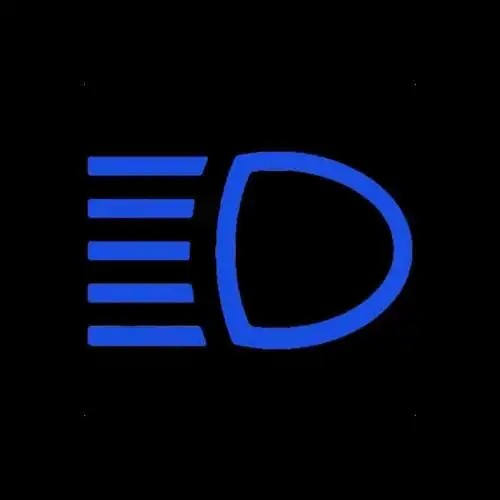 | High Beam Indicator | Indication: The high beam is activated, which is suitable for use on unlit, open roads at night. Required Actions: 1.SWITCH TO LOW BEAM: You must switch to low beam under the following conditions: When the distance to an oncoming vehicle is within approximately 150 meters. When following another vehicle within approximately 50 meters. When passing through an intersection. 2.PURPOSE: This prevents the strong light from affecting the vision of other drivers. |
What are the common green indicator lights?
| Symbol | Name | Meaning |
 | Low Beam Indicator | Indication: The low beam headlights are activated, providing essential illumination for scenarios such as driving on urban roads at night, during oncoming traffic encounters, and when following other vehicles. Required Actions: 1.CONFIRM FUNCTIONALITY: Ensure the low beams are operating correctly for safe visibility. 2.MAINTAIN USE: Continue using low beams in these conditions to meet basic lighting requirements without adversely affecting the vision of other road users. |
 | Front Fog Light Indicator | Indication: The front fog lights are activated. They are suitable for low-visibility conditions such as heavy fog, rain, snow, or dust (where visibility is below 200 meters) to enhance illumination of the road ahead. Required Actions: 1.USE APPROPRIATELY: Only use front fog lights in the specified low-visibility conditions. 2.SWITCH OFF WHEN NOT NEEDED: Turn off the front fog lights when visibility improves to avoid dazzling other drivers. |
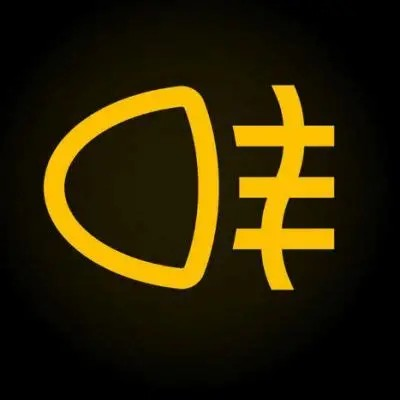 | Rear Fog Light Indicator | Indication: The rear fog light is activated, enhancing the vehicle's visibility from the rear in low-visibility conditions and reducing the risk of a collision. Required Actions: 1.DEACTIVATE IN NORMAL CONDITIONS: The rear fog light must be turned off when visibility improves to above approximately 200 meters. 2.PURPOSE: This prevents the intense light from causing discomfort or impairing the vision of following drivers. |
 | Cruise Control Indicator | Indication: The cruise control system is activated, maintaining the vehicle at a preset speed without requiring constant pressure on the accelerator pedal. Required Actions: 1.APPLY APPROPRIATELY: This function is suitable for use on roads with light traffic and stable conditions. 2.RESUME MANUAL CONTROL: Be prepared to manually deactivate the system and take full control of the vehicle using the brake or accelerator pedal in complex traffic situations or when road conditions change. |
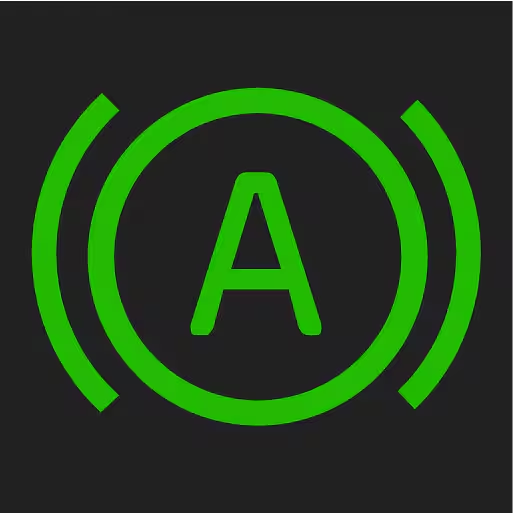 | Auto Hold Indicator | Indication: The Auto Hold function is active. After the vehicle comes to a complete stop, it will remain stationary without the need to keep the brake pedal depressed. Required Actions: 1.TO PROCEED: Press the accelerator pedal to release the hold and proceed. 2.APPLY APPROPRIATELY: This function is suitable for use at traffic lights, in stop-and-go traffic, and when stopping on inclines. |
 | Four-Wheel Drive Indicator | Indication: The four-wheel drive (4WD) system is engaged (in either High-Range or Low-Range mode). High-Range 4WD is suitable for surfaces like snow and mud, while Low-Range 4WD is designed for extreme off-road recovery and obstacle negotiation. Required Actions: 1.SWITCH TO 2WD ON PAVEMENT: When driving on paved roads, disengage the 4WD system and switch to two-wheel drive (2WD) mode. 2.PURPOSE: This reduces unnecessary fuel consumption and minimizes tire wear. |
What do the symbols on the car's interior buttons mean?
The buttons and controls inside a car can be grouped into three functional areas:
- Primary Controls: These are for operating key vehicle systems like lights, wipers, and driving modes. You'll find them conveniently placed on the steering wheel, control stalks, and center console.
- Climate Controls: This set of buttons, typically located in the center of the dashboard, allows you to manage the heating and air conditioning for cabin comfort.
- Seat Controls: Buttons or levers for adjusting the seat position are situated on the side of the seat itself, designed to be within easy reach for quick adjustments.
What are the common symbols for controlling car functions?
| Symbol | Function | Instructions and Operation Guidelines |
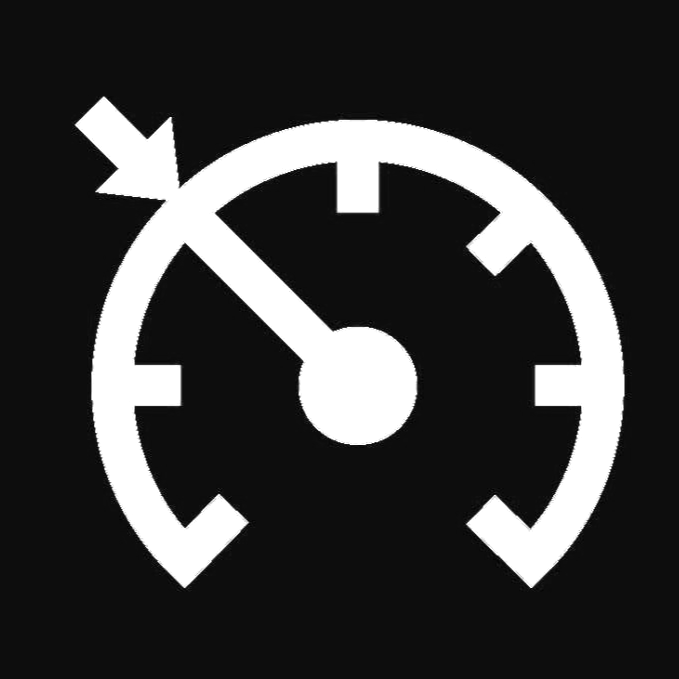 | Cruise Control Switch | Indication: The system is activated and set to a specific speed, allowing the vehicle to maintain a constant pace without the need to depress the accelerator pedal. It is suitable for use on roads with stable and light traffic conditions. Required Actions: 1.MONITOR SPEED ON DESCENTS: Pay close attention to vehicle speed, especially when driving downhill, as it may increase unintentionally. 2.DEACTIVATE WHEN NEEDED: If approaching slower traffic or any potential hazard, cancel the function promptly by applying the brake pedal. |
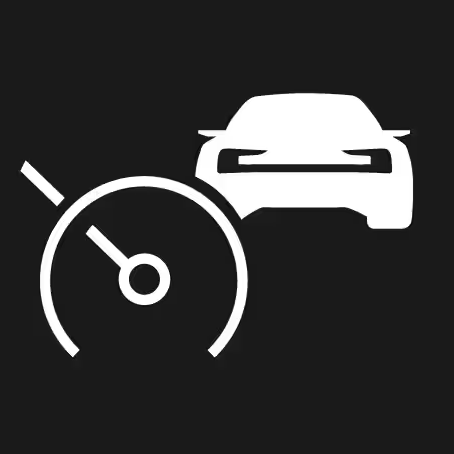 | Adaptive Cruise Control Switch | Indication: The system uses radar to detect vehicles ahead and automatically adjusts speed to maintain a safe following distance. Required Actions: 1.APPLY APPROPRIATELY: This function is suitable for use on highways. It is not intended for congested road conditions. 2.MAINTAIN SENSOR CLEANLINESS: Ensure the radar sensor remains clean and unobstructed to preserve its detection accuracy. |
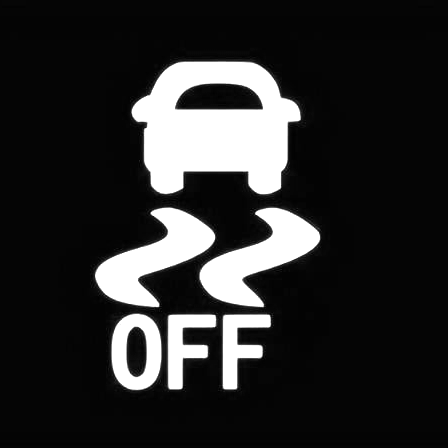 | ESP Off Button | Indication: The Electronic Stability Control (ESC) system has been deactivated. The system is enabled by default. Required Actions: 1.USE FOR TRACTION ONLY: Only deactivate the system when the vehicle is stuck in mud, snow, or sand and requires wheel spin to free itself. 2.RE-ENABLE IMMEDIATELY: Reactivate the system immediately after freeing the vehicle. 3.WARNING: Driving with the system deactivated during normal conditions significantly increases the risk of losing control of the vehicle. |
What are the controls for the light switches?
| Symbol | Name | Meaning and Operation Guidelines |
 | Parking Light Switch Symbol | Indication: This symbol controls the parking lights (also known as sidelights). When activated, the front and rear parking lights, along with the license plate light, will illuminate. Required Actions: 1.ACTIVATE APPROPRIATELY: Use this setting during dusk, when parked at night, in transition zones like tunnel entrances/exits, or in conditions of low visibility where the low-beam headlights are not yet necessary. 2.OPERATE CONTROL STALK: Rotate the lighting control stalk to this symbol's position to activate the lights. 3.DEACTIVATE: Return the control stalk to its original "OFF" position to turn the lights off. |
 | Low Beam Headlight Switch Symbol | Indication: This function activates the low-beam headlights, building upon the illumination provided by the parking lights. It is suitable for environments requiring foundational road illumination, such as unlit roads at night, inside tunnels, or during overcast and rainy weather. Required Actions: 1.ACTIVATE FROM PARKING LIGHTS: Rotate the lighting control stalk from the parking lights position to this symbol to switch on the low beams. 2.DEACTIVATE CORRECTLY: Return the stalk to the parking lights position or fully to the "OFF" position to turn off the low beams. 3.MAINTAIN IN TRAFFIC: Keep the low beams activated during oncoming traffic (meeting other vehicles) and when following another vehicle. The use of high beams is prohibited in these situations. |
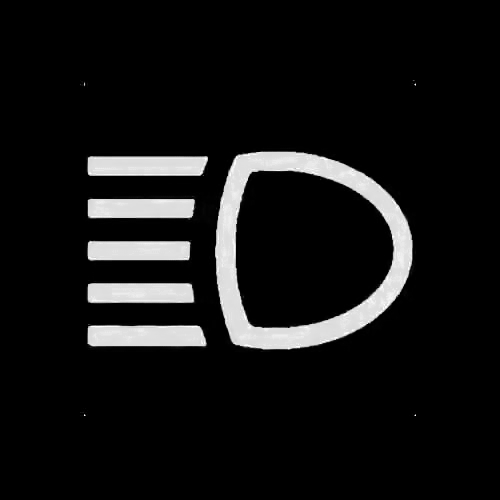 | High Beam Headlight Switch Symbol | Indication: This symbol controls the high-beam headlights, which can only be activated when the low-beam headlights are already on. It is suitable for use on unlit, open roads at night with no oncoming traffic. Required Actions: 1.ACTIVATE: Push the lighting control stalk forward (or, on some models, rotate the end of the stalk) to switch on the high beams. 2.DEACTIVATE: Pull the stalk backward to switch back to low beams. The high beams will also deactivate automatically when the low beams are turned off. 3.SWITCH TO LOW BEAM: You must switch to low beams under the following conditions: When the distance to an oncoming vehicle is within 150 meters. When following another vehicle within 50 meters. |
 | Turn Signal Switch Symbol | Indication: This control activates the vehicle's left or right turn signals, alerting surrounding vehicles and pedestrians of your intended change in direction. It is used when preparing to turn, change lanes, overtake, make a U-turn, or pull away from the curb. Required Actions: 1.OPERATE: Push the control stalk down to signal left, or up to signal right. 2.DEACTIVATE: The stalk will typically return to its neutral position automatically after completing the turn. On some models, manual cancellation is required. 3.SIGNAL IN ADVANCE: Activate the turn signal for at least 3 seconds before initiating your maneuver. 4.CONFIRM SAFETY: Only proceed with the maneuver after ensuring it is safe to do so. |
 | Hazard Warning Light Switch Symbol | Indication: When activated, all four turn signals (front, rear, left, and right) flash simultaneously. This function is suitable for use when the vehicle is temporarily parked due to a breakdown, is at the scene of an accident, during severe weather conditions (such as heavy rain or thick fog) with extremely low visibility, or when traveling in a convoy that requires unified warning signals. Required Actions: 1.OPERATE: Press the button on the dashboard bearing this symbol to activate the hazard warning lights. Press the button again to deactivate them. 2.WARNING: The use of hazard warning lights is prohibited during normal driving to avoid misleading other road users. |
| Symbol | Name | Meaning and Operational Guidelines |
 | Front Fog Lamp Switch Symbol | Indication: This control is for the front fog lights, which can only be activated when the parking lights or low-beam headlights are on. They are suitable for environments with visibility below 200 meters, such as heavy fog, rain, or dust, as they enhance illumination of the road ahead and have better penetration through fog than standard low beams. Required Actions: 1.ACTIVATE: Rotate the end dial on the lighting control stalk (or press a separate button on some models) to this symbol to turn on the front fog lights. 2.DEACTIVATE: Rotate the dial back from the symbol or press the button again to turn them off. 3.TURN OFF WHEN NOT NEEDED: Deactivate the front fog lights promptly when visibility improves to avoid dazzling drivers of oncoming vehicles. |
 | Rear Fog Lamp Switch Symbol | Indication: This control operates the rear fog light, which typically functions in conjunction with the front fog lights or low-beam headlights. Its purpose is identical to that of the front fog lights, primarily to enhance the vehicle's visibility from the rear, allowing following drivers to clearly identify its position and reducing the risk of a collision. Required Actions: 1.ACTIVATE: On some models, rotate the end dial on the lighting control stalk one more position after activating the front fog lights; on others, press a separate button on the dashboard. 2.DEACTIVATE: Use the corresponding method (reverse rotation or button press) to turn off the rear fog light. 3.TURN OFF PROMPTLY: Due to its high intensity, the rear fog light must be deactivated as soon as visibility improves to prevent dazzling drivers behind you and disrupting their vision. |
Understanding these symbols enables you to better operate your vehicle and minimizes the chance of errors. To stay safe in today's complex driving environment, make a habit of reviewing these symbols and connecting them to practical situations you encounter on the road.
If any infringement occurs, please contact us for deletion
Trending News

BYD Sealion 7 is not only cheaper than Tesla Model Y, what other differences do they have?
Is it better to buy the BYD Sealion 7 or the Tesla Model Y? This really makes one a bit hesitant, but before you make a decision, I recommend you take a good look at this article.

2026 Toyota Hilux Travo released, the brand-new exterior and interior are highly anticipated
If you're considering buying a Hilux, honestly, the comprehensive innovations in the ninth generation are worth waiting for. While the current model might still have some advantages in terms of reliability and price, the new model offers significant changes in terms of exterior and interior luxury, tech features, and powertrain options.

Toyota Land Cruiser FJ did not disappoint, the most anticipated civilian off-road vehicle is back.
Since its birth in 1951 under the name Toyota BJ, the Land Cruiser series has accumulated sales of approximately 12.15 million units in over 190 countries and regions worldwide, becoming a global off-road icon spanning more than 70 years.

In Malaysia, which sliding door MPVs are available?
The numerous advantages of sliding door MPVs make many people fond of this type of vehicle. However, MPVs are not a mainstream choice in the car market, so many people might not know which MPVs are available domestically.

Jaecoo J7 VS Honda CR-V, which is the most worthwhile C-Segment SUV to buy
With an exterior that closely resembles a Land Rover, Jaecoo J7's sales experienced several months of rapid growth but have recently slowed down. Perhaps the market is nearing saturation, as Jaecoo J7 has already surpassed the once-dominant Honda CR-V in the C-Segment SUV category.
Popular Cars
Model Year
Car Compare
Car Photo

